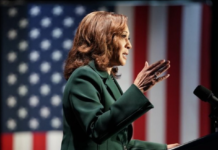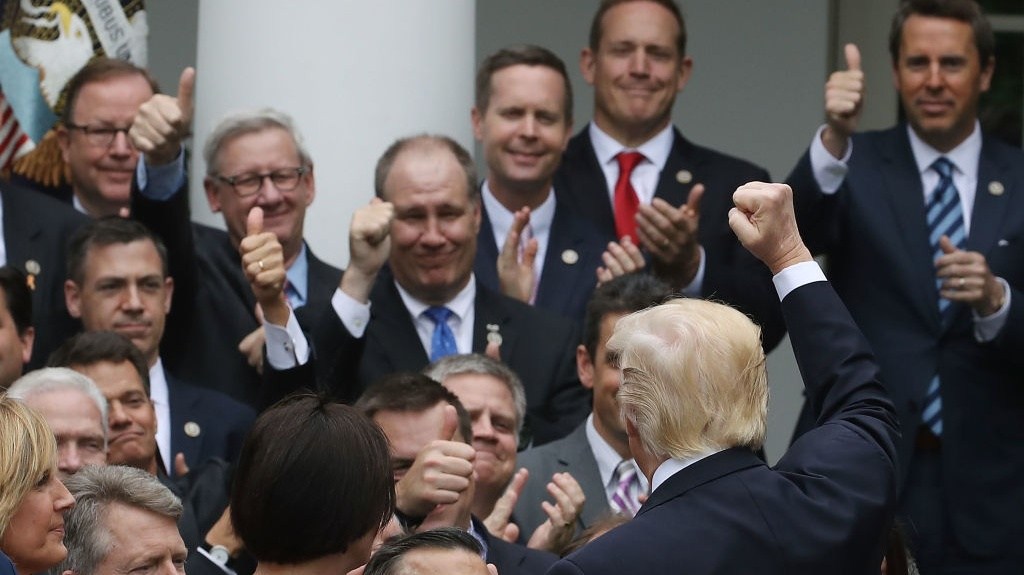Nadra Nittle/Originally published by The 19th
All Myshelle Bey’s 4-year-old daughter wants for Christmas is a Barbie Dreamhouse. The toy costs around $200, which is cost prohibitive for the single mother from Boston.
“She has had her heart set on it all year,” Bey said. “I’m sitting here determining which bill would I be OK with being behind on to give my child the Christmas that she deserves.”
As it is, paying for basic necessities such as utilities, rent and groceries and managing her daughter’s severe asthma has not been easy for Bey. Then, in October, the 29-year-old had to resume making student loan payments after the pandemic pause ended. Those payments are $150 per month, which add to the financial pressures Bey — who is pursuing a bachelor’s degree in behavioral science — now faces. Her student loans are under $10,000 and stem from her time at another college, which she left without a degree.
With no family members she can turn to for money and the return of student loan payments, Bey is particularly feeling the financial pinch this holiday season, and she’s not alone.
In a November U.S. News and World Report survey of 1,202 respondents with federal student loan debt, 76 percent say that the return of payments will reduce their holiday shopping budget. Fifty-four percent say they will spend less on gifts for family and friends, 41 percent say they will have smaller holiday meals, and 33 percent say they can’t afford to travel to see friends or family.
A Credit Karma poll of 1,000 adults from October identified a similar trend. It found that 28 percent of Gen Zers and millennials say student loan repayments will make the holiday season unaffordable this year compared with 15 percent of Gen Xers and four percent of baby boomers. In addition, 32 percent of Gen Zers and 25 percent of millennials say repayments will make traveling home for the holidays too expensive.
“Ever since I’ve started paying back student loans, it has made life a lot harder,” said Bey, a former participant in one of the housing programs run by Economic Mobility Pathways (EMPath), a Boston-based national nonprofit that helps low-income families working toward financial stability. “Yes, single moms are offered certain programs for free [Christmas] gifts, but half of the time it’s not gifts that really are for your child’s age range, depending on where you’re getting it from. My daughter doesn’t really care for building blocks and Legos.”
In June, the Supreme Court blocked President Joe Biden’s plan to give borrowers up to $20,000 in student debt relief, an amount that would have wiped out Bey’s balance entirely. Despite that blow, the Biden-Harris administration has continued to offer forgiveness for select groups of borrowers. On December 6, the administration announced that it had approved $4.8 billion in relief for 80,300 borrowers as a result of fixing long-term inaccuracies in both the income-driven repayment forgiveness and Public Service Loan Forgiveness programs. Altogether, the Biden-Harris administration has forgiven close to $132 billion for about 3.6 million Americans. Borrowers who have received this relief include those with total and permanent disabilities and individuals defrauded by for-profit colleges.
The administration has also launched the SAVE plan to make loan payments more affordable than they ever have been — waiving payments for single borrowers earning under $15 per hour and allowing higher earners to save more than $1,000 on payments annually. After the Supreme Court decision, the Education Department announced that it is instituting an “on-ramp” approach to repayment through September 30, 2024, to spare borrowers who miss monthly payments from being moved into default, reported to credit bureaus or directed to debt collectors.
Still, the Biden-Harris administration faces pressure to do more to alleviate student debt, which amounts to over $1.6 trillion nationally. After the administration announced recent plans to relieve student debt for borrowers in select circumstances, progressive lawmakers, including Sens. Elizabeth Warren and Bernie Sanders, wrote to the administration to ask it to broaden both the borrowers eligible for relief and the amount of relief that would be granted under a potential plan. The Education Department’s rule-making committee considered proposals for a new debt relief program during hearings that took place earlier this month, although it is not slated to announce a new forgiveness plan until May.
Augustus Mays, vice president of partnerships and engagement for Education Trust, which advocates for all students to achieve academic excellence, would like to see the Biden-Harris administration forgive student loan debt broadly.
“The Biden administration has done a number of things right to support borrower repayment, for example, the SAVE plan that could potentially cut payments in half,” Mays said. “For many Americans, that is helpful. But it’s not enough for those Black and Brown students who are already facing an unequal wealth distribution when they’re entering college but also when they come out of college in their careers and jobs that they have in comparison to their White peers. What they need is much more federal support in alleviating the cost of college tuition.”
According to the Education Trust, Black students represent just 14 percent of the college-age population but hold 25 percent of federal student loans. Black women are particularly likely to have student debt, graduating with $38,800 in federal undergraduate loans on average, which is a greater amount than any other demographic, Education Trust found. In addition, Black women are more likely than others to default on their loans.
The Supreme Court’s decision to strike down loan forgiveness has made it harder for the federal government to reduce the debt burden on vulnerable groups, Mays added. If the government doesn’t enact a policy to address this issue soon, the debt crisis will only worsen, he said. Already, many borrowers are finding themselves in financial quandaries.
“These families and students are dealing with tough choices this holiday season in terms of what they can and cannot pay for,” Mays said. “They are sitting at their kitchen table trying to figure out, ‘Am I gonna buy that Barbie Dreamhouse for my daughter or am I going to be able to pay our rent or our mortgage?’ And it’s all because of the debt that they accumulated trying to make their lives better. That is a real scenario for Black, Brown and low-income families across this country.”
U.S. News and World Report found that 28 percent of borrowers can’t even afford holiday decorations. Buying a $150 Christmas tree will be a sacrifice for Bey, but she feels that, as a mom, she has to make it happen for her daughter.
Yasmine Mifdal, an adjunct professor at Columbia College Chicago, has simply accepted that the holiday season won’t be anything like she imagined it. Part-time faculty at the institution have been on strike since October 30 over cuts to courses and larger class sizes; it is now the longest adjunct strike in the nation’s history. The fact that federal student loan payments resumed the same month that this ongoing strike began has had a significant impact on the 27-year-old’s finances.
“To have those student loan payments come in and then be on strike for seven weeks has been really, really difficult,” said Mifdal, an audio engineer who graduated from Columbia in 2018 and joined the college’s audio arts and acoustics faculty in fall 2021. “I live alone. I have a cat who is on pretty expensive prescription medication. I myself have Crohn’s disease, so I have some pretty significant payments every month that go towards my medical stuff, my rent, my car. I’ve been having a lot of car trouble recently too, and it kind of just seems like the perfect storm of not working and not receiving any money I had budgeted and planned for through the end of the year.”
Mifdal estimates that she’s lost almost $7,000 during the strike. She’s had to borrow money from family and take on side gigs to stay afloat over the past two months. She’s especially crushed because she didn’t work for much of the pandemic and had gone into debt to survive that dry period. Just after digging herself out of that financial hole, she had to contend with both student loan repayments and a strike.
“I was hoping I’d be able to start actually saving money a little bit, and I saved a little bit of money at the beginning of the semester,” she said. “But I’ve pretty much once again depleted my savings and now I’m at the point where I’m going to start having to put a lot of things on credit until I can go back to work again.”
Mifdal has about $125,000 in student loan debt. Originally from Massachusetts, Mifdal said that traveling home for the holidays is just too expensive now. She plans to work on Christmas Eve and Christmas Day doing live production and live streaming for church services, and she probably won’t buy anyone a gift except for her partner.
Had it not been for the strike or the resumption of student loan payments, Mifdal said that, in addition to heading back to Massachusetts, she would have flown to Los Angeles to support a friend who has lost family members during Israel’s war on Gaza. She would also buy gifts for family and friends and purchase a gift for herself: a new bed.
“I’ve had my bed for like seven years, and I was really hoping that at the end of the semester, I was gonna buy a new mattress and a new bed, and that’s not happening anytime soon,” she said.
To ensure that all groups achieve economic mobility in this country, states and higher education institutions need to come up with a constructive and bipartisan plan to address the student debt crisis, according to Mays. Before the COVID-19 pandemic struck, borrowers of color were already struggling to cope with their debt, he said. As inflation rises, making food, housing, cars and other products more expensive than they once were, student debt has become a heavier burden. That said, Mays applauded the Biden-Harris administration for not penalizing borrowers who fall behind on their payments for the time being.
“It’s something that I hope they continue to do,” he said. “I hope they make it a public fight in terms of the folks in Congress who are trying to say, ‘No, no, no, it’s time for people to pay back their loans’ when they actually can’t. I think the administration could do a huge service to millions of Americans if they advocated for a little bit more grace during this tough period.”
Bey would like to give lawmakers a reality check. She wants them to understand that just because they don’t struggle with student loan debt doesn’t mean that others don’t struggle to make monthly payments. She wishes public officials would figure out how to help borrowers help themselves.
“There are a lot more people who struggle, especially single moms,” she said. “They expect us to get these high-paying jobs, but we can’t do that if we have to pretty much divide ourselves into 50 different pieces to try to better our lives. We’re trying, but we have student loans, we have bills, we have everything else. We can’t afford anything at this point.”
Image: Drazen Zigic/Freepik



































